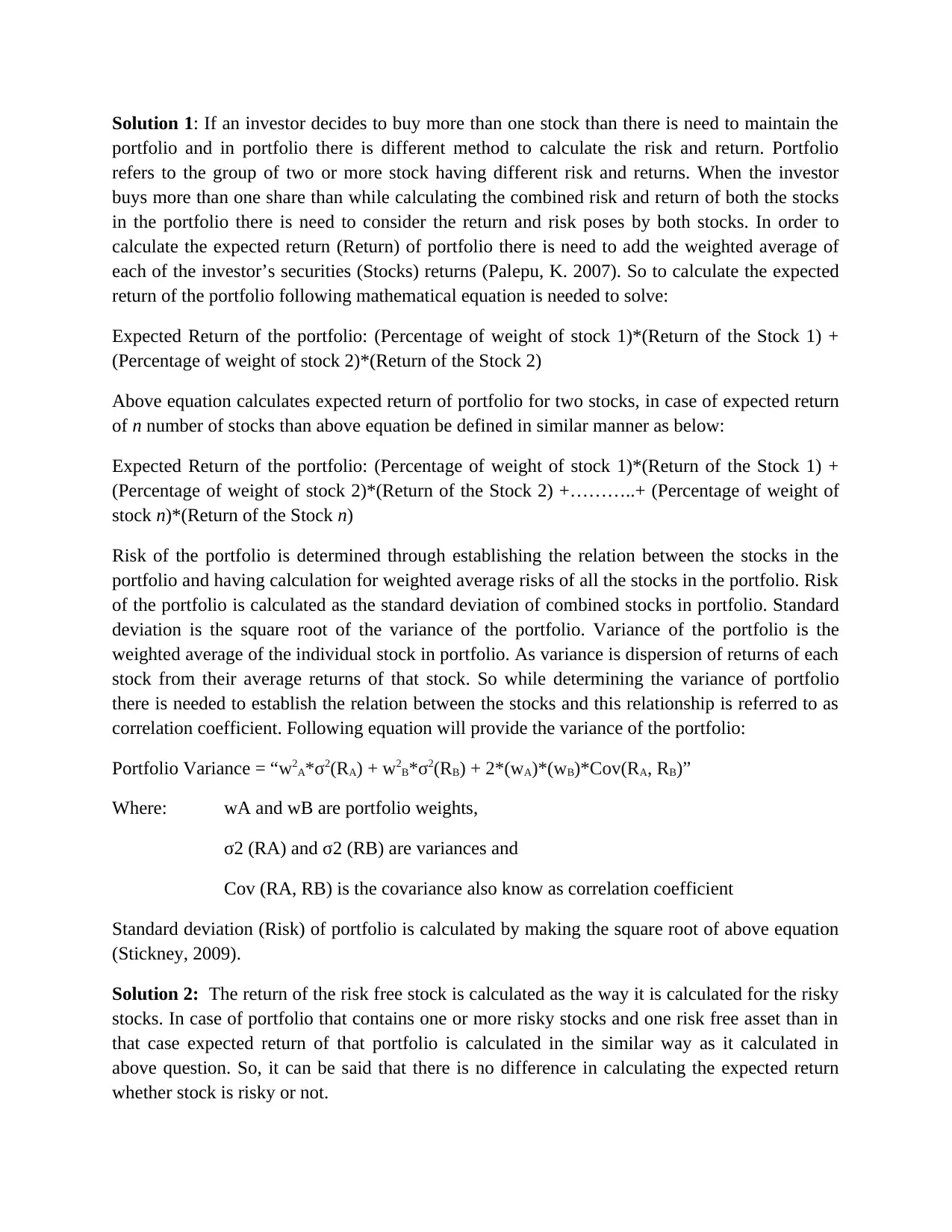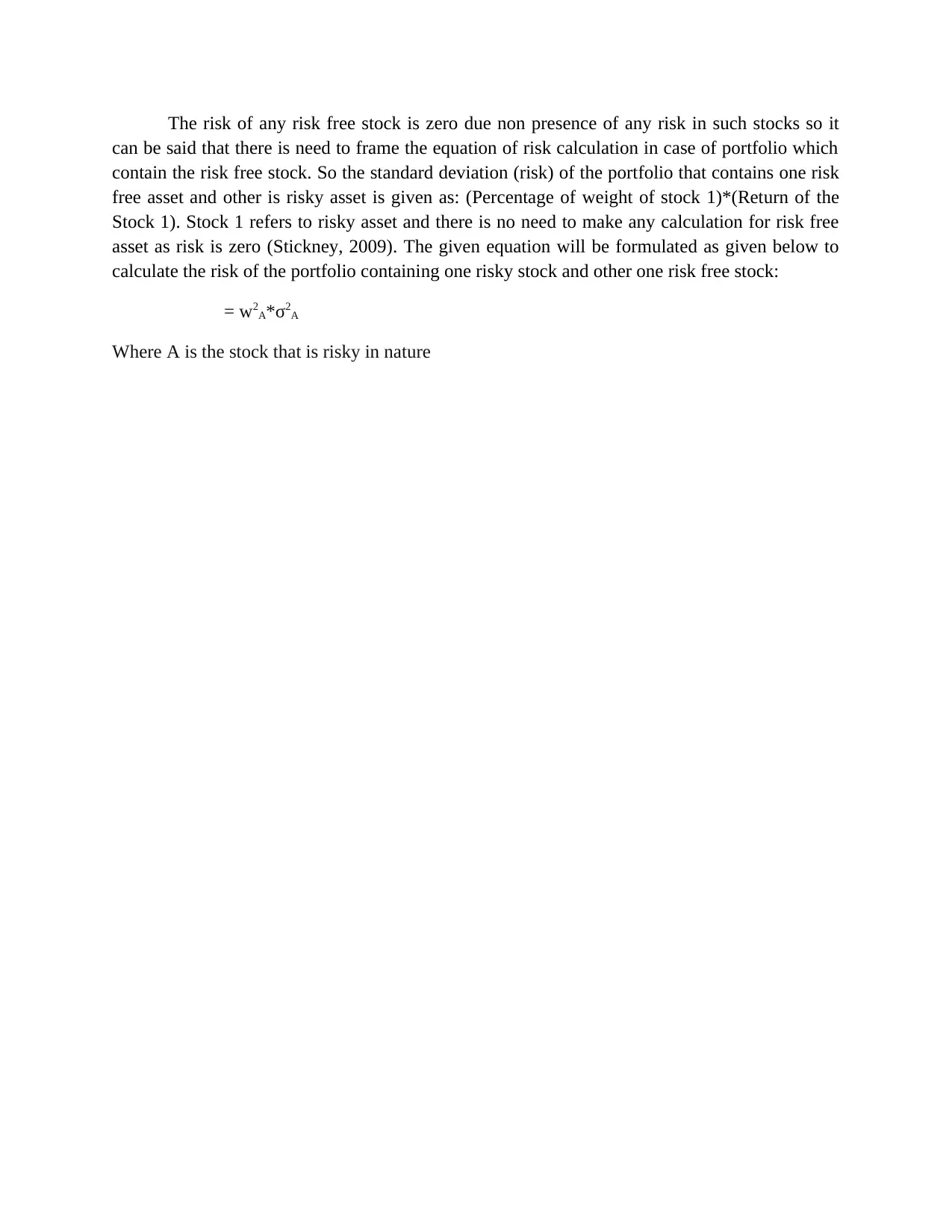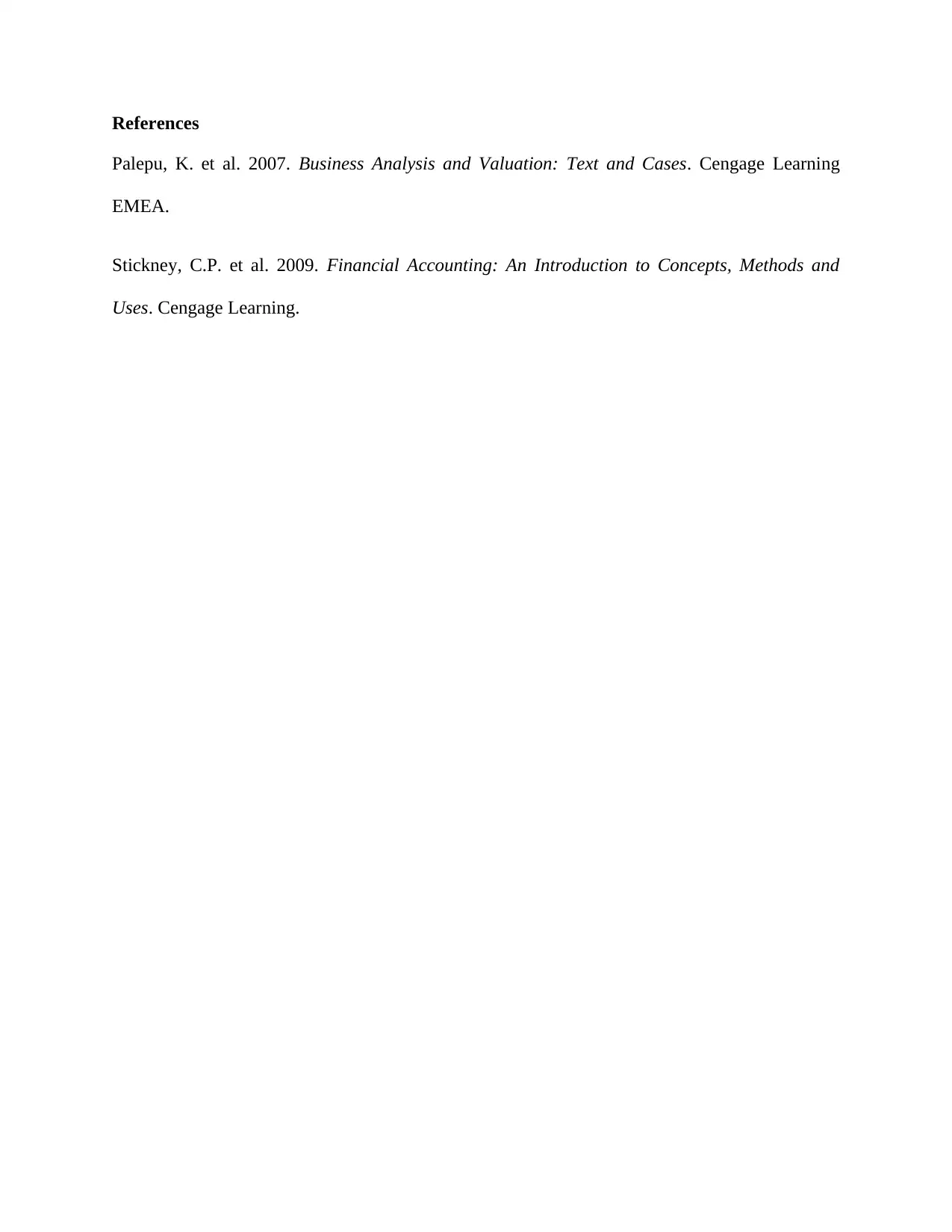Portfolio Risk and Return Calculation Methods: Finance Assignment
VerifiedAdded on 2020/05/11
|3
|771
|78
Homework Assignment
AI Summary
This assignment provides solutions to calculate portfolio risk and return, covering scenarios with both risky and risk-free assets. The first solution explains the calculation of expected return and risk for a portfolio containing multiple stocks, detailing the use of weighted averages, standard deviation, and variance, including the role of the correlation coefficient. The second solution addresses the inclusion of a risk-free asset in the portfolio, highlighting that the expected return calculation remains consistent, but the risk calculation simplifies due to the zero-risk nature of the risk-free asset. The assignment uses formulas to illustrate the calculations, referencing key financial concepts and providing a practical guide for understanding portfolio management and investment analysis. References to relevant finance textbooks are also included.
1 out of 3










![[object Object]](/_next/static/media/star-bottom.7253800d.svg)